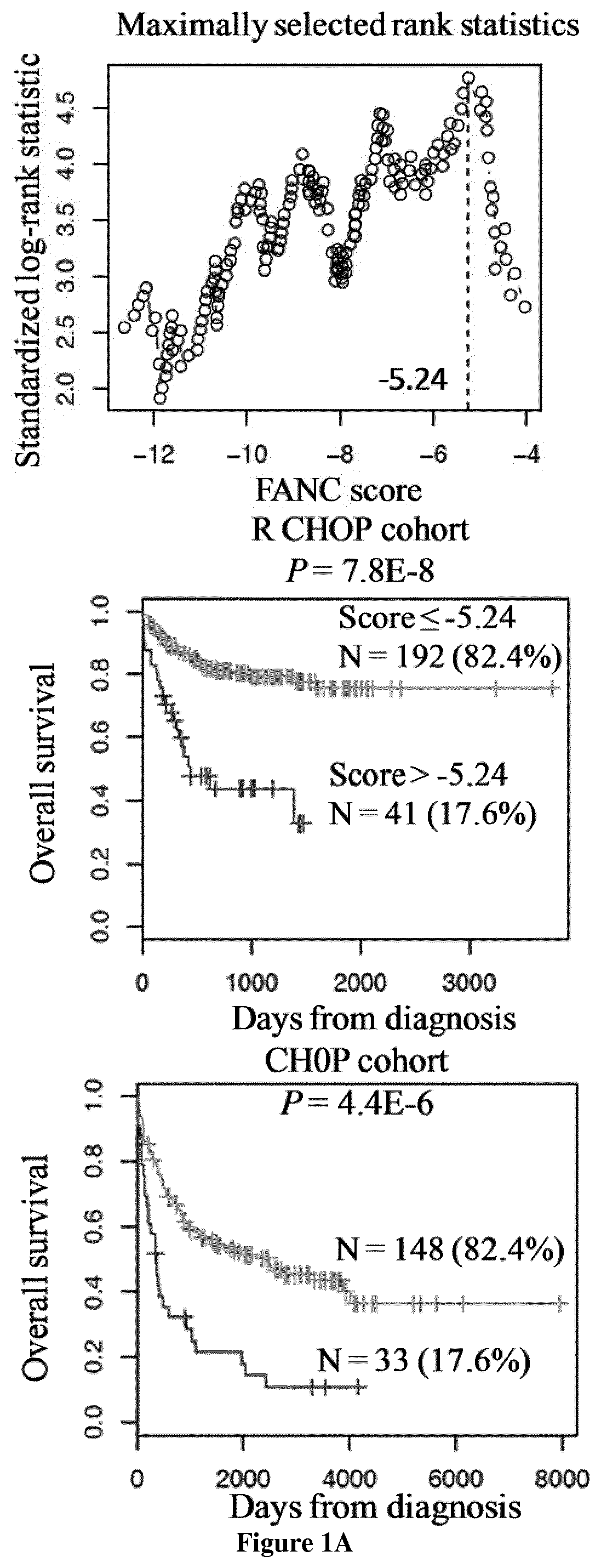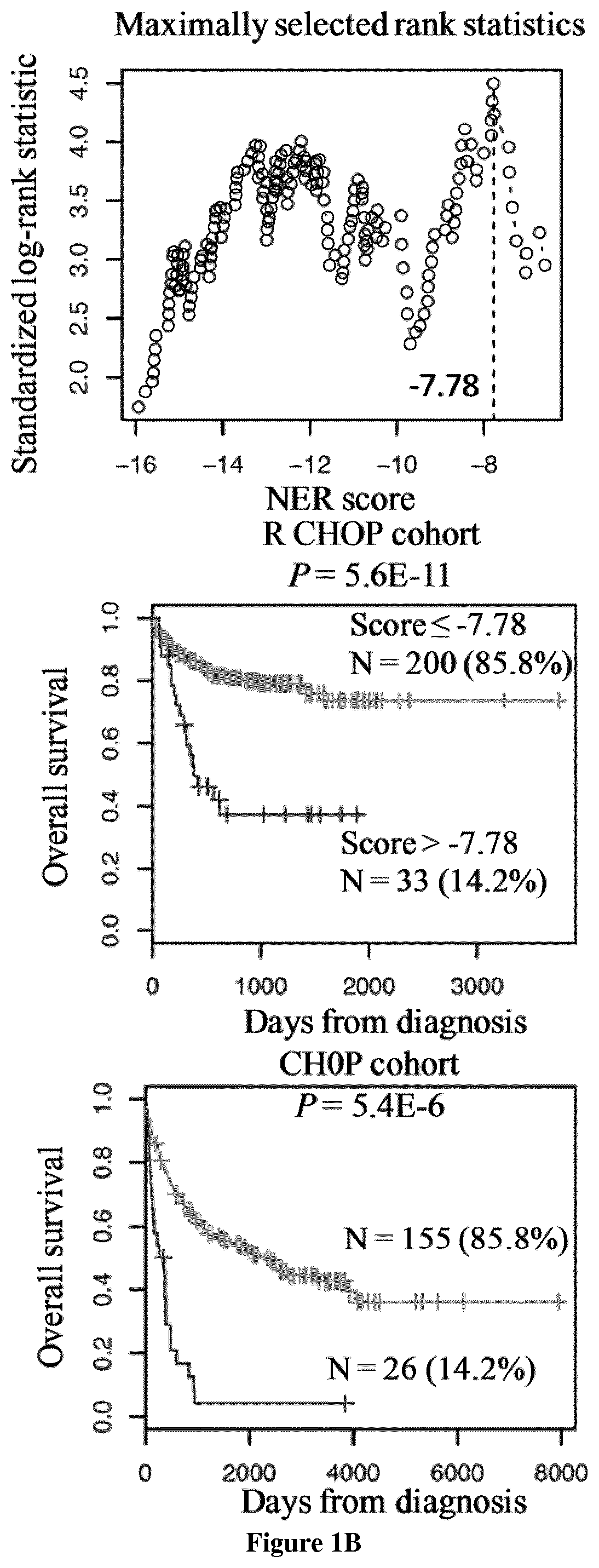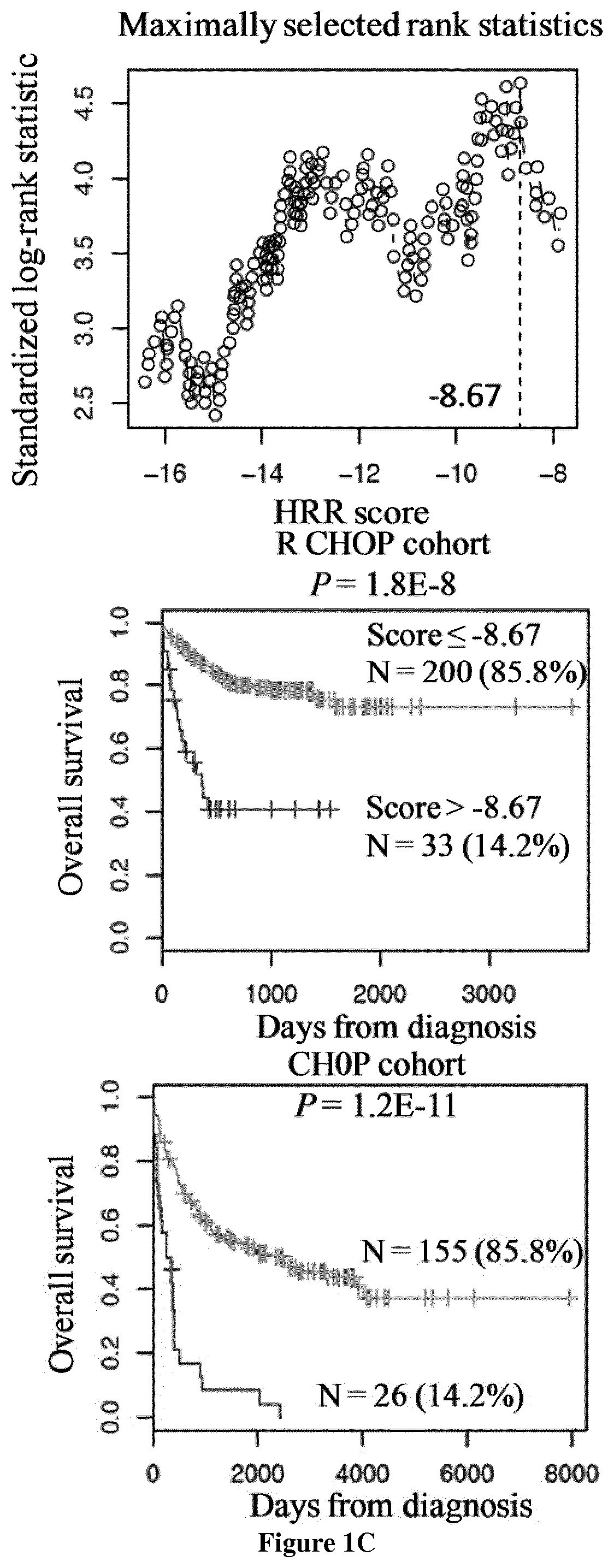Methods for predicting response to DNA repair pathway inhibitors in diffuse large B-cell lymphoma
a technology lymphoma, which is applied in the field of methods for predicting the response of dna repair pathway inhibitors to diffuse large bcell lymphoma treatment, can solve problems such as mitotic catastrophe, gene instability and chromosomal translocation
- Summary
- Abstract
- Description
- Claims
- Application Information
AI Technical Summary
Benefits of technology
Problems solved by technology
Method used
Image
Examples
example 1
[0140]Material & Methods
[0141]Patients
[0142]Gene expression microarray data from two independent cohorts of patients diagnosed with DLBCL were used. The first cohort comprised 233 patients and was used as a training cohort, and the second one comprised 181 patients and was used as a validation cohort (9). Patients of the training cohort were treated with Rituximab-CHOP regimen and patients of the validation cohort with CHOP regimen. Pre-treatment clinical characteristics of patients were previously published by the group of G. Lenz (9). Affymetrix gene expression data (HG-U133 plus 2.0 microarrays) are publicly available via the online Gene Expression Omnibus (http: / / www.ncbi.nlm.nih.gov / geo / ) under accession number GSE10846. Microarray data were MAS 5 normalized with a scaling factor of 500.
[0143]Gene Expression Profiling and Statistical Analyses
[0144]The statistical significance of differences in overall survival between groups of patients was calculated by the log-rank test. Mult...
example 2
[0169]All the 18 DLBCL cell lines (OCILY4, SUDHL6, SUDHL4, HT, SUDHL2, OCILY1, OCILY10, OCILY3, OCILY8, OCILY19, SUDHL10, DOHH2, U2932, OCILY18, OCILY7, SUDHL8, KARPAS231 and WSU NHL) investigated have FANC, NER, BER, MMR, HRR, NHEJ and DNA repair scores superior to the cutoff defined for each score. Accordingly, DLBCL cell lines are sensitive to DNA Damage Response (DDR) inhibition using CHK inhibitors (at submicromolar concentrations) as previously reported (67).
[0170]The pharmacological inhibitors of poly(ADP-ribose) polymerase-1 (PARP-1) have been included in the arsenal of anti-cancer drugs by showing consistent benefits in clinical trials against BRCA-mutant cancers that are deficient in the homologous recombination repair (HRR) of DNA double strand breaks (DSB). PARP-1 is a multifunctional protein implicated in various cellular responses to DNA damage ranging from different pathways of DNA repair and cell death to stress signaling, transcription, and genomic stability.
[0171]T...
PUM
| Property | Measurement | Unit |
|---|---|---|
| replication stress | aaaaa | aaaaa |
| resistance | aaaaa | aaaaa |
| drug resistance | aaaaa | aaaaa |
Abstract
Description
Claims
Application Information
 Login to View More
Login to View More - R&D
- Intellectual Property
- Life Sciences
- Materials
- Tech Scout
- Unparalleled Data Quality
- Higher Quality Content
- 60% Fewer Hallucinations
Browse by: Latest US Patents, China's latest patents, Technical Efficacy Thesaurus, Application Domain, Technology Topic, Popular Technical Reports.
© 2025 PatSnap. All rights reserved.Legal|Privacy policy|Modern Slavery Act Transparency Statement|Sitemap|About US| Contact US: help@patsnap.com



